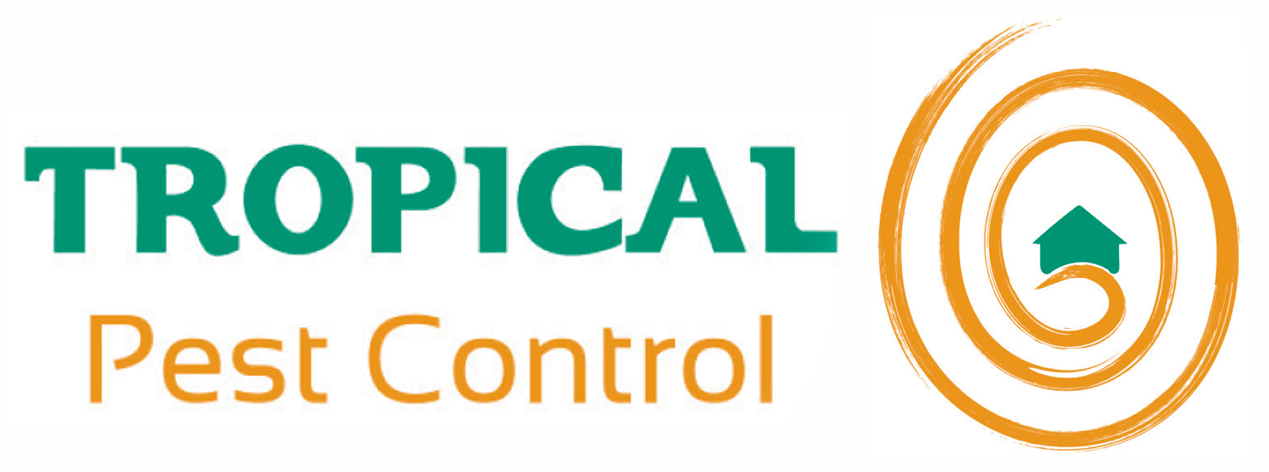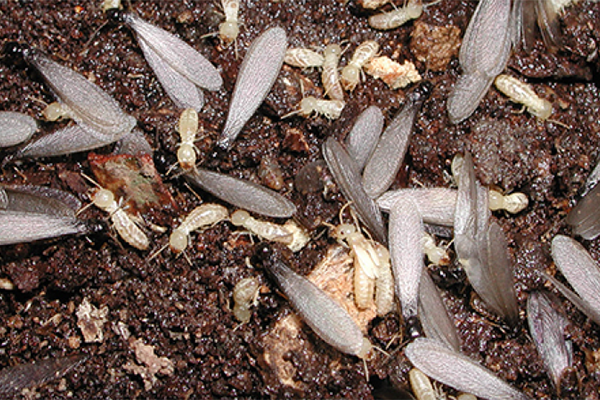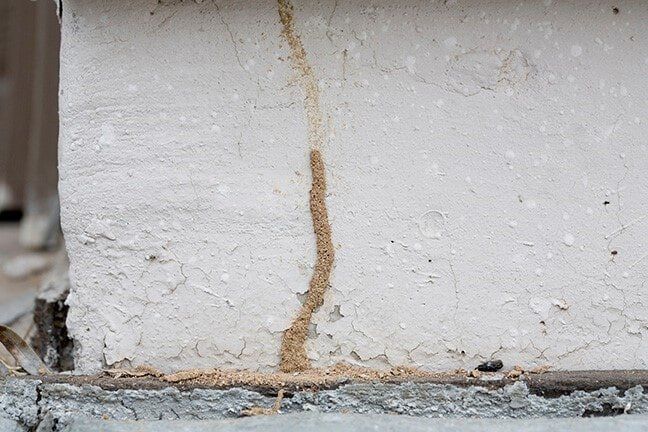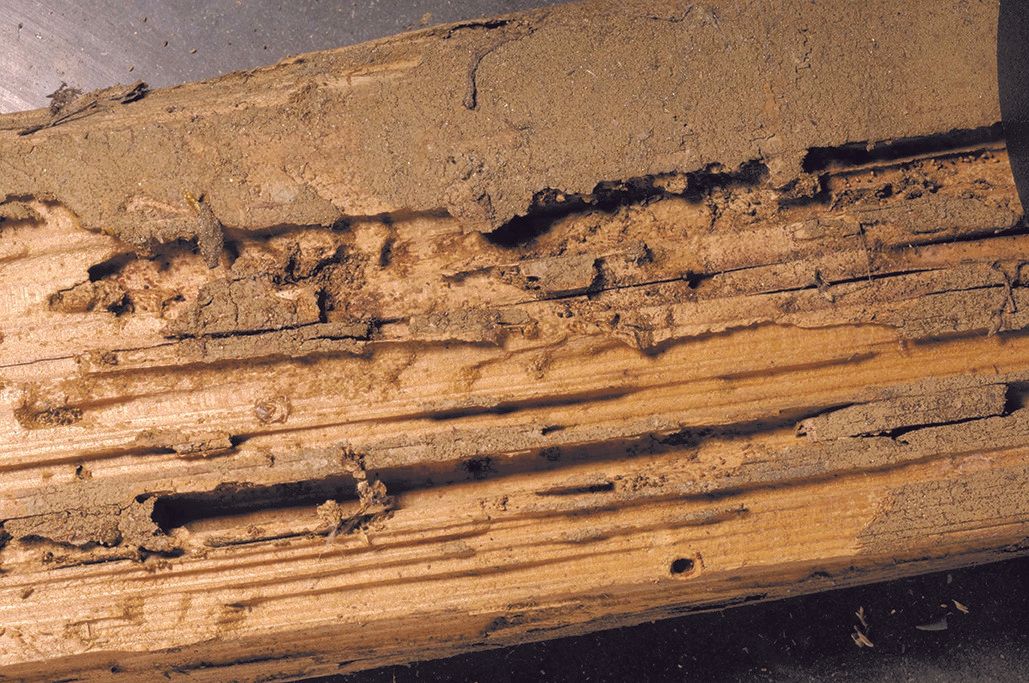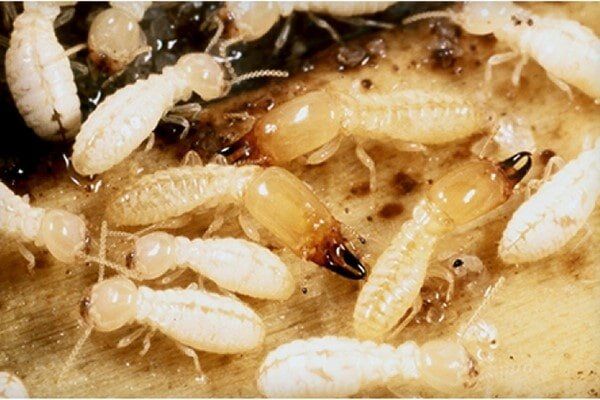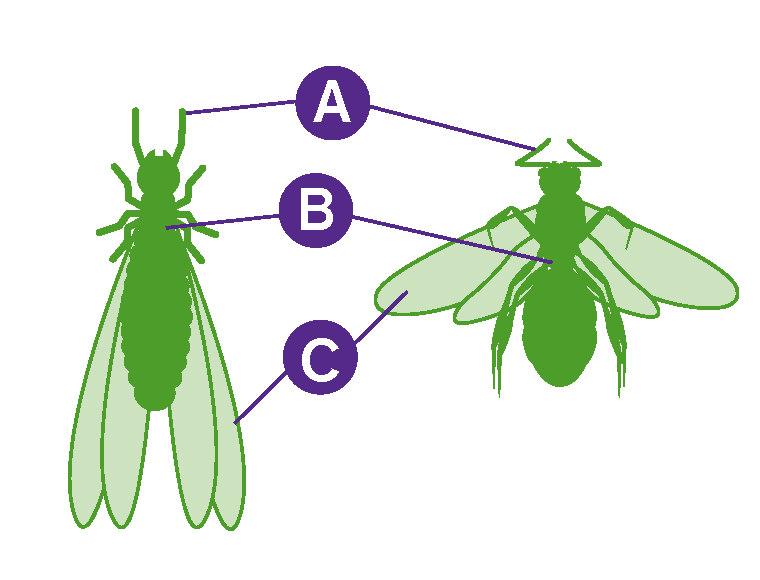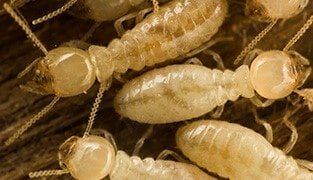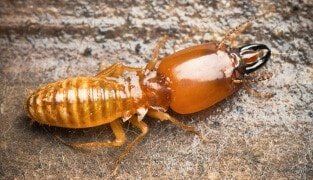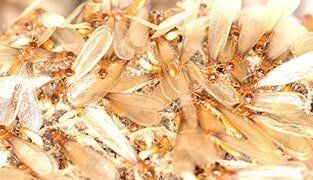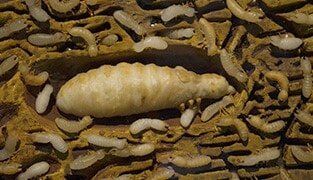ABOUT TERMITES
TERMITE TREATMENT MACKAY
DAMAGE
Termites are discovered in millions of homes each year.
How can they cause so much damage? A subterranean termite colony can include millions of termites, and the worker termites forage for food 24/7. Their food is the wood in your home: your floors, walls and ceilings. A termite may only need a 0.6mm space to pass through your foundation and reach the wood above.
SIGNS OF TERMITES
How do you know if you have termites? While it’s always best to have an inspection done by a pest management professional, termites will occasionally leave clues. If you do investigate, here’s what to look for.
Swarming
Termites often swarm in warmer weather and after a rain shower to start new colonies. The swarming event can be brief, so even if you do not see flying termites, you are likely to see the discarded wings around window sills, doors, heating vents, bathtubs and sinks after a swarm takes place. Termite swarmers use their wings to move away from their original colony. Their wings break off and they pair up and find locations with a wood source where the male and female can begin a new colony.
Mud tubes
Foraging worker termites, the ones that eat wood to feed the rest of the colony, must stay in moist conditions and away from natural enemies like ants. To get across barriers between the soil and the wood above, termites construct small, meandering “mud” tubes from moist soil and excrement. The tubes are about the diameter of a pencil, though they can become wider. Tubes can be seen on foundation walls or inside walls, on plumbing pipes and spanning crawl spaces between the ground and the subfloor. These termite highways are a sure sign termites are or have been in the home.
Damaged wood
Termites eat wood from the inside-out along the grain, so damage often isn’t visible until it becomes significant. Termite inspectors will often tap to listen for hollow-sounding wall studs, skirting boards and floors. If the wood gives way, it may reveal a hollowed-out pattern. The wood also will include some “mud” similar to mud tubes, plus live termites.
Termites are especially robust and destructive and form large colonies. Walls of infested buildings may contain nests that hold enough moisture to allow the colony to live entirely above ground, sometimes causing bulging walls.
HOW TO IDENTIFY TERMITES
Hollow wood in your home? Cracked or bubbling paint? Discarded wings? Learn how to identify the pests in your house.
Is it an Ant or Termite?
Swarming termites and ants look similar and are easily misidentified. The clearest way to distinguish them is to examine the wings (C). Termite swarmers have two sets of wings of equal length. The front pair of wings on a swarmer ant is longer than the back pair. There are other distinguishing characteristics: An ant’s waist (B) is narrower than a termite’s. Ants have a joint in their antenna (A), while termites do not. But here’s the biggest difference: Ants are usually just a nuisance. Termites damage your home.
THE TERMITE COLONY
Workers
Workers make up the overwhelming majority of the colony because they are responsible for feeding it, including the queen. These soft-bodied, clear to light-coloured termites are about the size of grains of rice. They rarely leave the dark, damp tunnels that run from the colony through the soil and into the wood of buildings. Workers continuously forage for food, maintain the nest and tend to the queen and her brood.
The queen
She is the largest and most important colony member because she can lay eggs at a rate of one every second ― as many as a million eggs in her lifetime. She is large, up to 4 inches long, and can live for a decade or longer under ideal conditions. If she dies, a new queen will arise to take her place and keep the colony going.
CONTACT INFORMATION
- Mon - Fri
- -
- Sat - Sun
- Closed
Outside of office hours: By appointment only
OUR LOCATION
BROWSE OUR WEBSITE
CONTACT INFORMATION
- Mon - Fri
- -
- Sat - Sun
- Closed
Outside of office hours: By appointment only
ABOUT US
Tropical Pest Control can rid your home of unwanted guests such as termites, cockroaches, fleas, silverfish, wasps and many more. We are fully licensed to handle the installation of reticulation systems, HomeGuard termite protection and Exterra bait systems. Call us today.
